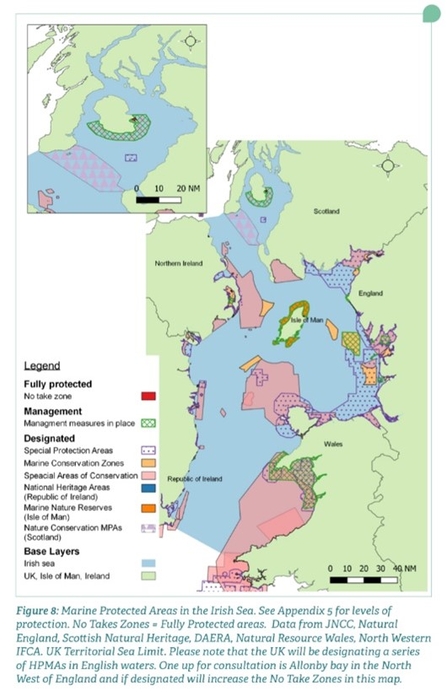
State of Nature 2024 - Marine Overview
Our marine environment is ecologically rich and diverse, covering 87% of the Manx territory, from our biodiverse coastlines to the 22 km (12 nm) limit, an area of approximately 4000 square km.
Our geology, geographical location and climate result in numerous different marine ecosystems, capable of supporting a huge variety of wildlife species. Our 160 km coastline boasts rocky intertidal habitats, sandy subtidal sediments, coastal heath and headlands, dunes and dune-grassland, numerous ecologically-crucial sea floor habitats, (including mearl beds, horse mussel reefs, kelp forests and eelgrass meadows), as well as estuarine areas characterised by saltmarsh and brackish waters and of course, the open sea.
In addition to their value solely as habitats, many of these areas act as buffers between the land and sea, helping to provide natural hazard regulation, and offering vital biological services such as nutrient and mineral cycling and carbon sequestration.
Important Species
Manx waters support a great biodiversity; from marine megafauna such as whales, dolphins, seals and basking sharks, to hundreds/thousands? of microfauna invertebrate species. Internationally important populations of sea birds such as Manx shearwaters, guillemots and razorbills, visit our shores to breed and overwinter, and are reliant on our fish stocks and nesting grounds.
Manx Marine Nature Reserves (MNRs)
We currently have ten MNRs, covering 10.8% of Manx waters and making up 51.8% of the 0-3nm area.
They were designated to prevent further decline in the health and biodiversity of our marine environment, to improve the socio-economic benefits of the sea and to mitigate the threats of loss of habitat, competition from invasive species, pollution and overfishing.
Their protection aims to restore affected habitats and to support sustainable fisheries and well-managed MNRs may well help to build resilience to the future effects of climate change.

We are the central piece in the interconnected Irish Sea jigsaw of countries sharing our coastline meaning that any efforts to protect and preserve our habitats and species require multidisciplinary collaboration of governments, industries, researchers and NGOs across all our bordering nations to be successful.
Ensuring the health of our marine environment is crucial for our economy and community. Our marine habitats provide us with food, employment, tourism, recreation and untold benefits to our health and wellbeing, as well as assisting with climate regulation, immobilisation of pollutants and carbon sequestration. Pressures on Manx waters and the species they support are likely to intensify in the face of population increase, offshore developments and the effects of climate change and our opportunities to protect and restore them and to mitigate further decline may be deteriorating rapidly.

